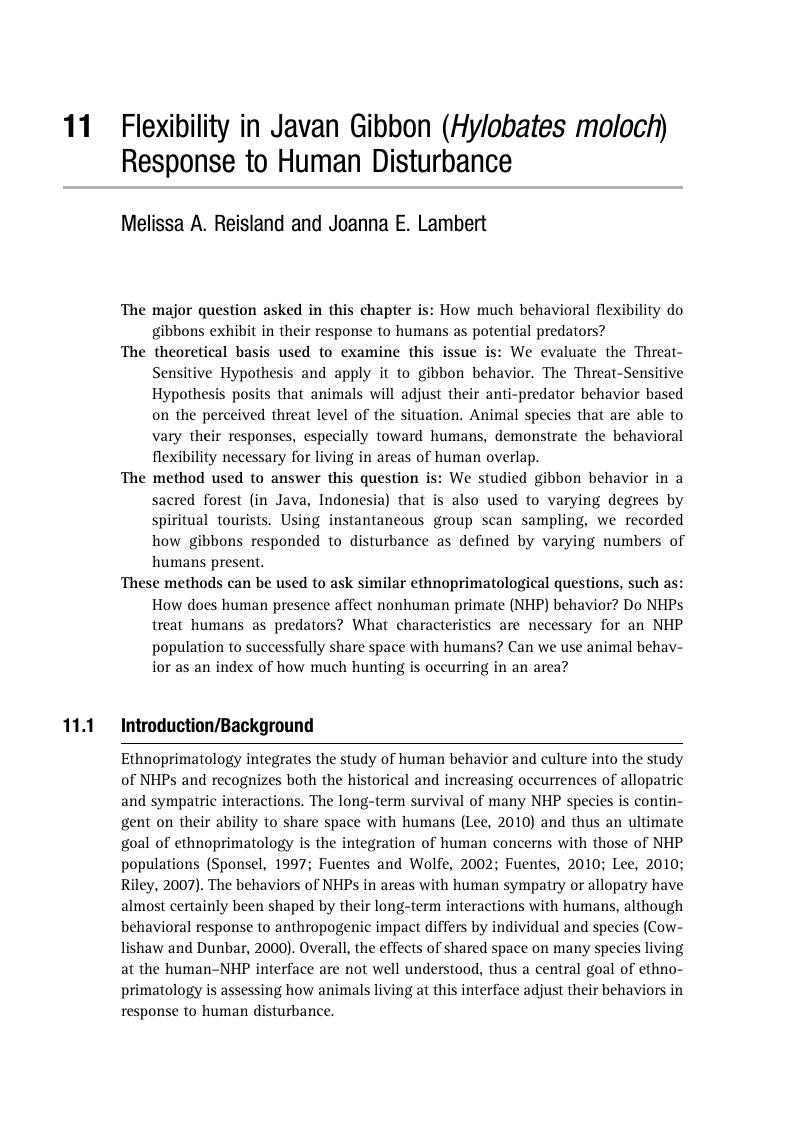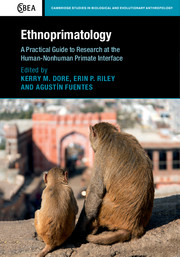Book contents
- EthnoprimatologyA Practical Guide to Research at the Human–Nonhuman Primate Interface
- Cambridge Studies in Biological and Evolutionary Anthropology
- Ethnoprimatology
- Copyright page
- Contents
- Contributors
- Methods
- 1 Introduction: Doing Ethnoprimatology in the Anthropocene
- Part I Characterizing the Interface
- 2 Introduction to Part I
- Section I Behavioral Ecology
- Section II Epidemiological Studies
- Section III Predator–Prey Studies
- Section IV Human–Primate Conflict
- 11 Flexibility in Javan Gibbon (Hylobates moloch) Response to Human Disturbance
- 12 Conflicted Primatologists: A Survey on Primatologists’ Views on Conflict and Resolution Between Human and Nonhuman Primates
- Part II Following the Data: Incorporating Ethnography
- Part III Implications for Conservation
- Index
- References
11 - Flexibility in Javan Gibbon (Hylobates moloch) Response to Human Disturbance
from Section IV - Human–Primate Conflict
Published online by Cambridge University Press: 16 February 2017
- EthnoprimatologyA Practical Guide to Research at the Human–Nonhuman Primate Interface
- Cambridge Studies in Biological and Evolutionary Anthropology
- Ethnoprimatology
- Copyright page
- Contents
- Contributors
- Methods
- 1 Introduction: Doing Ethnoprimatology in the Anthropocene
- Part I Characterizing the Interface
- 2 Introduction to Part I
- Section I Behavioral Ecology
- Section II Epidemiological Studies
- Section III Predator–Prey Studies
- Section IV Human–Primate Conflict
- 11 Flexibility in Javan Gibbon (Hylobates moloch) Response to Human Disturbance
- 12 Conflicted Primatologists: A Survey on Primatologists’ Views on Conflict and Resolution Between Human and Nonhuman Primates
- Part II Following the Data: Incorporating Ethnography
- Part III Implications for Conservation
- Index
- References
Summary

- Type
- Chapter
- Information
- EthnoprimatologyA Practical Guide to Research at the Human-Nonhuman Primate Interface, pp. 137 - 153Publisher: Cambridge University PressPrint publication year: 2017



